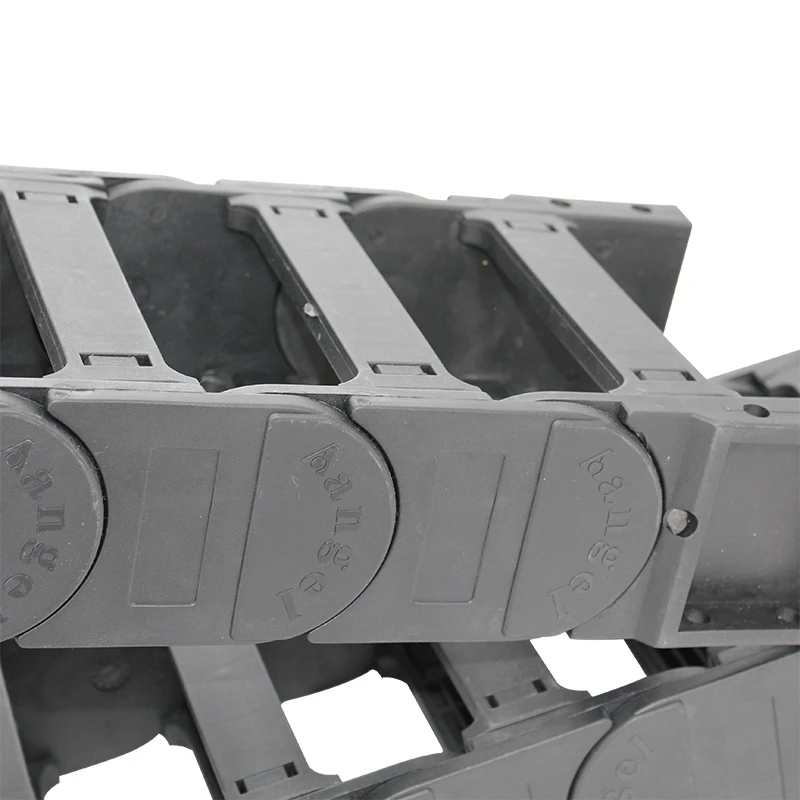flexible cable track system
Flexible Cable Track Systems Revolutionizing Cable Management
In today’s rapidly evolving industrial landscape, the efficiency and safety of operations are paramount. One area where this is particularly crucial is in cable management. Among the various options available, the flexible cable track system stands out as a revolutionary solution that enhances the functionality and organization of electrical and communication cables. This article explores the benefits, applications, and design considerations of flexible cable track systems.
Understanding Flexible Cable Track Systems
At its core, a flexible cable track system is designed to guide and protect cables as they move with machinery or equipment. Unlike traditional cable management solutions that might involve rigid conduits or fixed cable trays, flexible cable tracks can bend and adjust according to the movement of machinery, providing a versatile approach to cable management. This flexibility is essential in environments where equipment may pivot, rotate, or otherwise change position during operation.
Benefits of Flexible Cable Track Systems
1. Enhanced Durability Traditional cable management systems can struggle under the wear and tear of constant movement. Flexible cable tracks, constructed from robust materials, are designed to withstand dynamic motion, minimizing cable damage and extending the lifespan of both cables and connectors.
2. Improved Safety Unmanaged cables pose significant safety risks, such as tripping hazards or accidental disconnections. Flexible tracks contain cables neatly, reducing clutter and increasing workplace safety. Moreover, they can provide protection against environmental factors like dust, moisture, and chemicals.
3. Ease of Installation and Maintenance Flexible cable tracks are often easier to install and modify than their rigid counterparts. With fewer fixed points, companies can adapt their cable management systems as their operational needs change. This adaptability reduces maintenance time and costs, allowing for seamless upgrades and modifications.
4. Optimized Space Utilization Many industrial settings are constrained by limited space. Flexible cable tracks can be tailored to fit in tight spaces or along unique pathways, allowing businesses to optimize their layouts and avoid bulky installations that consume valuable floor space.
Applications of Flexible Cable Track Systems
Flexible cable track systems find their place in a variety of industries, driven by their versatility
flexible cable track system

- Manufacturing In automated manufacturing environments, machinery often moves along various axes, requiring sophisticated cable management solutions. Flexible tracks allow for unrestricted motion while keeping cables organized and out of the way.
- Cranes and Hoists In applications where cranes lift heavy loads, flexible cable tracks can guide power and control cables safely, maintaining their integrity even under extreme operational conditions.
- Robotics The field of robotics highly benefits from flexible cable tracks, as robots often operate in unpredictable paths. These systems protect the intricate wiring and ensure reliable functionality during quick movements or orientations.
- CNC Machines Computer Numerical Control (CNC) machines require precise cable routing for power and signal cables. Flexible cable track systems support dynamic motion while protecting sensitive wiring from damage.
Design Considerations
When designing a flexible cable track system, several factors should be considered to ensure optimal performance
- Cable Type and Capacity Assess the types of cables being used and their specific needs, such as insulation stiffness and bend radius. The track must accommodate the volume and weight of cables without risk of wear or tear.
- Environment Consider environmental factors like temperature extremes, exposure to chemicals, and humidity. The materials used for the flexible track must be suited to withstand those conditions.
- Movement Patterns Understanding the operational movements is critical for designing an effective cable track. It’s essential to analyze the range of motion and intended applications to ensure that the system can handle the dynamic requirements.
Conclusion
Flexible cable track systems represent a significant advancement in the field of cable management, marrying practicality with design innovation. By offering enhanced durability, safety, and flexibility, they cater to the diverse needs of modern industries. As technology continues to evolve, so too will the demands on cable management solutions, and flexible cable tracks are poised to meet these challenges head-on, ensuring that systems operate smoothly and safely in an increasingly automated world.








